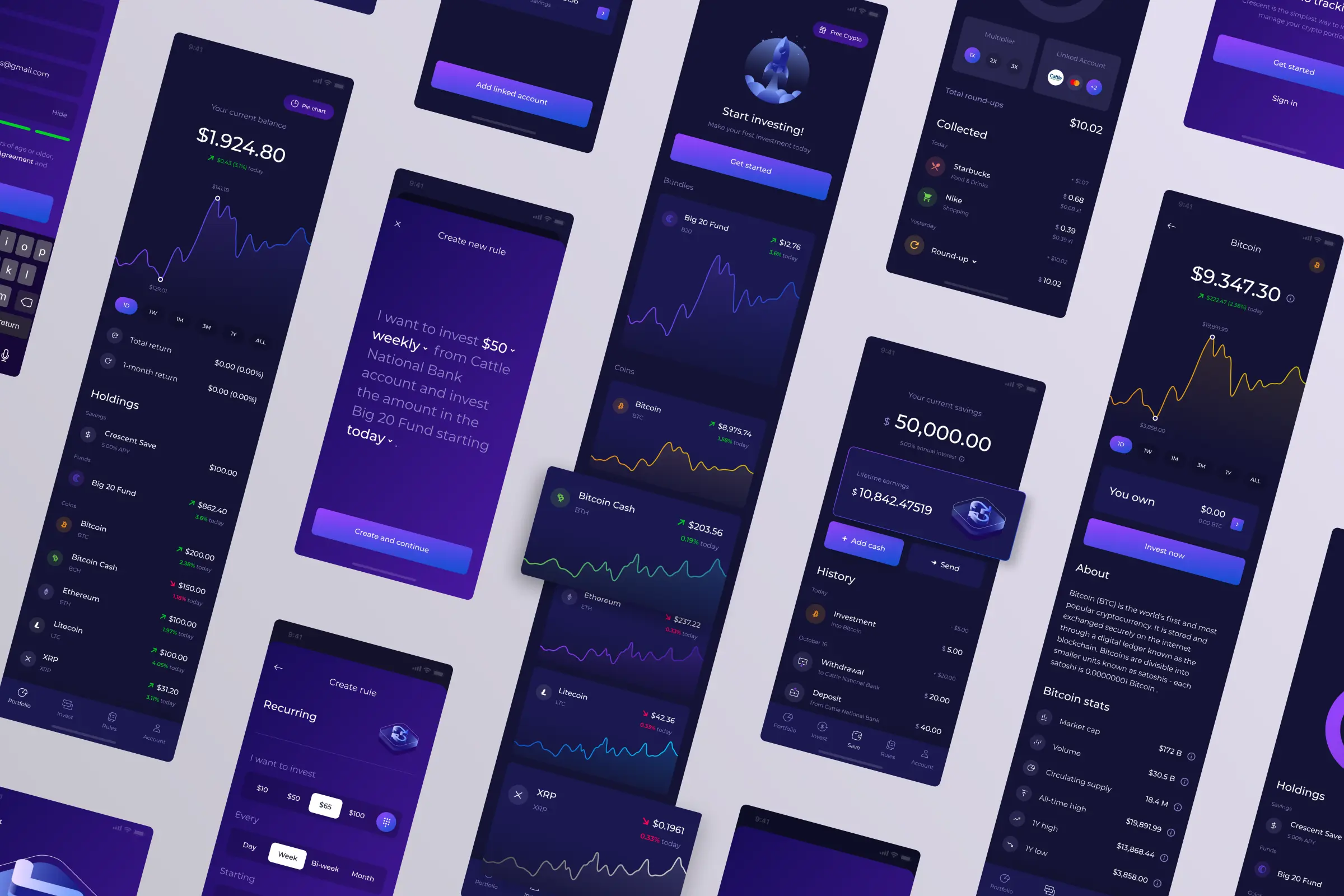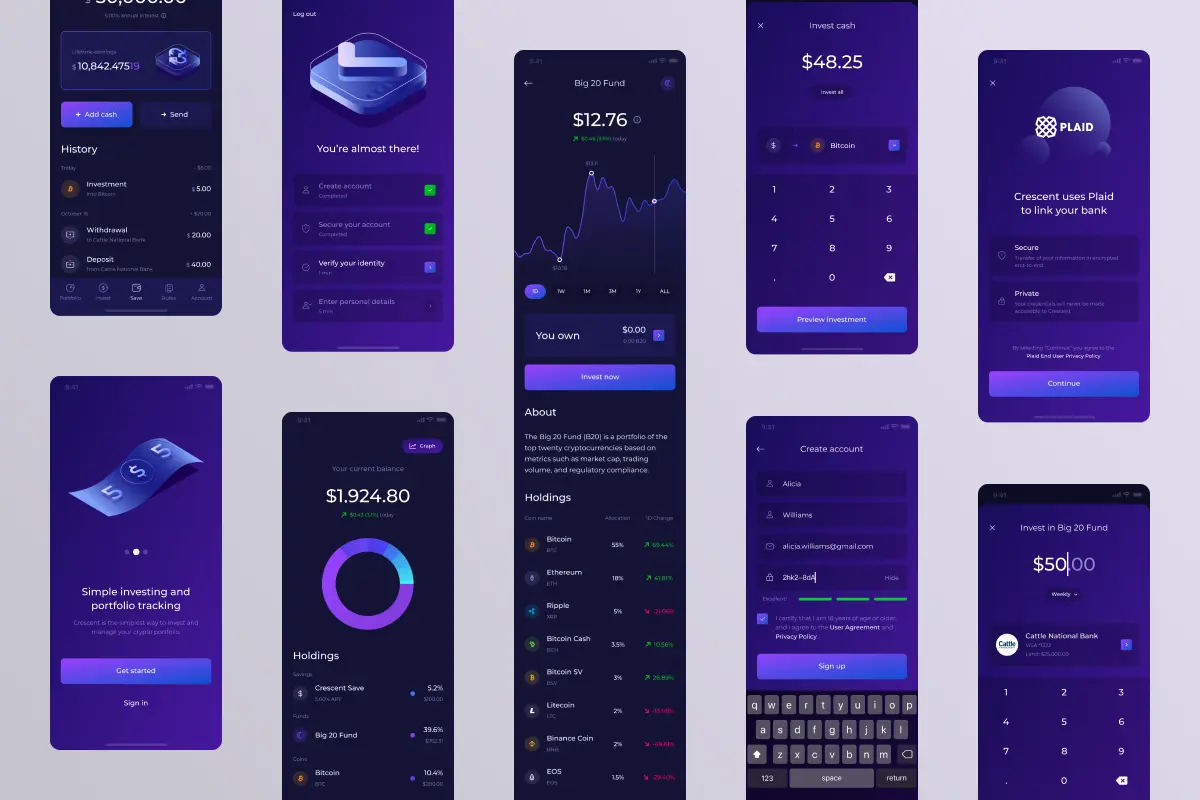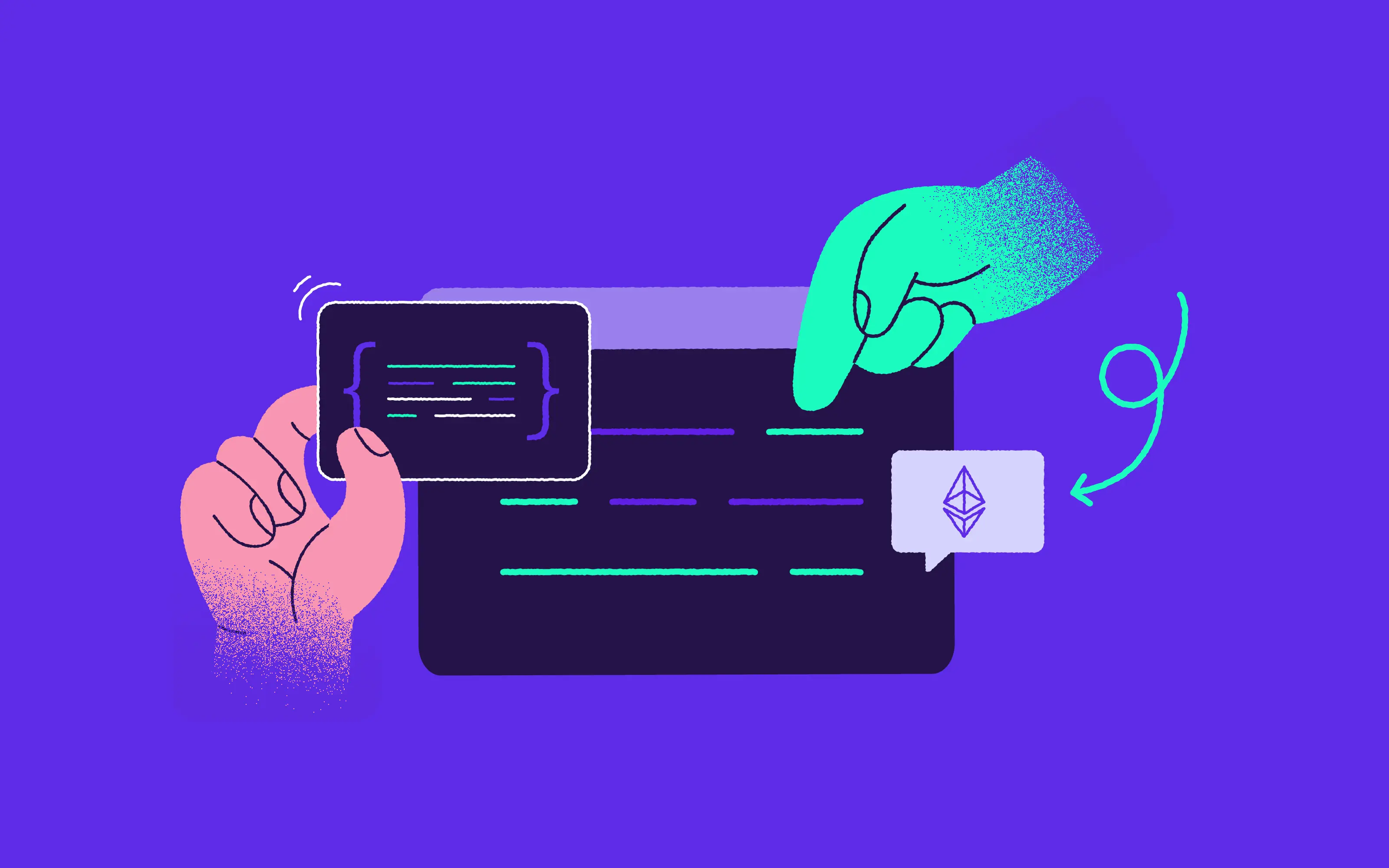
When blockchain projects are spoken about, it's often in relation to the quality of the backend technology and the implicit benefits of privacy and security which are so important in this industry. As a result, design often gets forgotten in the blockchain application - and product owners later suffer the consequences. When we talk about design in the context of a blockchain solution, we mean UX design, product design, and branding, all of which we believe to be vital elements for the success of a blockchain product. In this blog post, we aim to highlight the huge benefits of paying attention to each of these areas from the outset and will showcase a couple of recent projects to illustrate our points.
UX and Blockchain - a Powerful Relationship
A blockchain is a distributed ledger technology that allows users to verify and record transactions on a decentralized and transparent platform. Each transaction is verified by a network of nodes, making it peer-to-peer and eliminating the need for intermediaries. Once a transaction is confirmed, it cannot be altered, and all copies of the ledger are updated, making it immutable. This ensures a high level of security and transparency of the transactions and the data stored on the blockchain.
Blockchain technology is being used in various industries, including finance, healthcare, and supply chain management, to improve efficiency, security, and accountability. The UX experience in the blockchain network is a relatively new field but it's one in which huge developments are already taking place. There are a few key areas in blockchain that UX designers are keen to improve. We walk you through these below.
What are the key issues that need to be addressed?
1. Blockchain jargon
Your target user might well be a blockchain expert who understands the exact meaning of words such as dApps, smart contracts, and signed transactions. If so, great - you don’t have to worry too much about them navigating their way around your website or app. They’ll figure out what they need to do. However, whilst it has become a common occurrence to use blockchain in business, chances are that you’ll want to expand your market and appeal to those users who are just beginning to dabble in the industry. They might have heard that it's worth investing in BitCoin, but they’re not too sure how to go about it.

Here is your chance to appeal to them through great UX - both when it comes to digital design and navigation, but also through selecting the right words. Your focus should be on user needs and potential values, rather than the technology behind it.
To put it another way, rather than talking about ‘signed transitions,’ you should simply inform your user that their payment will be secure. When mentioning ‘smart contracts’, you can explain that the user will be paid automatically and instantly. The less jargon you use, the smoother your user experience will be, and the more likely you’ll be to retain your customers.
________________________________________________________________________________
Use Case - A decentralized ML network (In stealth mode)
Our client is building an open-access, tokenized, decentralized machine learning network to enable smart infrastructure built around a decentralized digital economy.
10Clouds was tasked with completing the redesign of the website and in the future will also be working on the same client’s mobile app.
We delivered a high-quality and user-friendly design for a blockchain system with a particular focus on making the language clear and understandable to the main users. We’re pleased to say that it was very well received.

________________________________________________________________________________
2. Onboarding to wallets, DApps, and markets
Related to the above point is the huge value of having an effective onboarding process. Some time ago, we wrote about the importance of this process in fintech - but the same is relevant when you want to develop a blockchain solution. Client onboarding is a business driver, which can make or break your product.
According to Deloitte, 38% of new banking customers will abandon the onboarding process if it takes too long or requires more information than they are prepared to disclose. At least 26% of those customers feel that “easy enrolment and login” are the most important criteria on which they decide who to bank.
So what are the essential things to consider in a blockchain onboarding process for a wallet, DApp, or marketplace?
- Keep it as short as possible - The fewer steps that you have in your onboarding process, the better, while at the same time retaining essential security requirements for login.
- Use the right terminology for your audience - As the point above suggests, take the time to understand your audience and conduct user testing to see what language you should be using to appeal to them.
- Explain each step that you go through - As a KYC (‘know your customer’) requirement, you’ll likely require both I.D. verification and facial recognition. Clearly explain to you users what you need from them at each stage. If things go wrong, don’t just provide an ‘error message’. Instead be solution-driven, and suggest why a problem occurred, and what the user can do to fix it.
- Don’t present too many choices at once - Much as it’s tempting to relay everything that you can offer your users, too many choices will put them off and confuse them. Lead with one or two at the outset, and introduce others later in the process where appropriate.
3. Creating transparency and clarity
As mentioned above, the blockchain market is tough, so above all else, you want to create trust and clarity. This should go beyond using understandable language, and creating a user-friendly onboarding process. The entire user interface of your website or app should look as much as possible like a banking product.
New users with no technical background will be drawn to a simple, user-friendly design that they recognize from past use of other financial products. So if in doubt, always aim for simplicity. It will stand you head and shoulders above the competition.

4. Boosting transaction speed
As technology has evolved, you would naturally expect transactions to be faster than ever. But there are still reports of sluggish transaction speed, which is a growing concern in the industry.
As Deloitte Insights puts it, Blockchain-based systems are comparatively slow. As for the enterprise blockchain, the network's sluggish transaction speed is a major concern that depends on high-performance legacy transaction processing systems.”
To highlight a start comparison - Visa does around 1,700 transactions per second on average, which compares to just 4.6 transactions per second for Bitcoin. The trouble is that there will be some overlap between the users of both platforms, and these same users will have been accustomed to not waiting.
The solution here is two-fold. At the very least, it's important to let your users know that some degree of waiting is normal. Including a progress bar to manage expectations would be highly useful. If you’re looking to tackle the problem at its root, there is a group of Nano-like blockchain technologies that can provide faster (around 5 seconds) transaction speeds with no fees. EOS, Stellar Lumens, and Ripple have the same benchmarks which might compete with Visa. In summary - transaction speed is something you should definitely consider.
Case study - Crescent
Crescent is reinventing the way clients invest in crypto. Their mobile app offers crypto index funds and personalized robo-investing so clients can grow a diversified portfolio over time, hands-free.
10Clouds brought Crescent’s idea towards a full design flow and a Mobile MVP (Android & iOS) by closely working with their CEO. Our main goal was to support Crescent in receiving its next funding and therefore growing its business. Creating great UX and UI played a key role in securing this funding.

________________________________________________________________________________
Brand Design and Blockchain Development - Stand out from the crowd
A brand is another area of blockchain products that are often forgotten about. It shouldn’t be. As with any competitive product on the market, effective branding is what makes you stand out from the crowd. Your brand is your reputation and what you stand for.
The global blockchain technology market size was valued at USD 3.67 billion in 2020. It is expected to expand at a compound annual growth rate (CAGR) of 82.4% from 2021 to 2028. So if you’re a new player in the market, you need to make sure that prospective users know about you.
If you would like to read more about the branding process, you can do so here, but below are the top tips that we’d like to offer you when it comes to branding your blockchain product:
Build your visual identity - In an increasingly saturated market, you need a brand identity that is instantly recognizable. Take the time to create this by researching both your intended target audience and the market trends. Consider creating personas of the people who you’re trying to appeal to. Finally, work with your top creatives on building your brand identity, including a logo, and the accompanying imagery.
Focus on trust - There are many users who remain skeptical about the blockchain ledger. Investors and customers alike now expect more from blockchain businesses than a clever coin name and a social media presence. Trust and security are paramount, so these should permeate your brand both in your values and vision and in any relevant visual brand representation.
Have a story to tell - In what is a fairly dry market, a brand story helps you to bring a human element to the blockchain. Explain why and how you started out, what you’ve achieved so far, and where you want to be in 5 years' time. Take your current and prospective customers on the journey with you.
Use graphics to explain complex ideas - Blockchain technology is complicated, but your brand doesn’t have to be. Having a well-designed and easy-to-understand visual system is crucial. This will make it easier for your users to engage with your product and they will be far more likely to come back for more.
________________________________________________________________________________
Use Case - A crypto finance service provider (in stealth mode)
Our client is an integrated crypto finance service provider, which helps its clients access liquidity, earn yield and manage risk across cryptocurrency assets. Its goal is to optimize for long-term value by delivering investment flexibility and maximizing returns.
10Clouds worked on the company’s branding and product design. We also produced a pitch deck of collateral to be used for sales and marketing purposes.
Our creative team formed of three people took on the challenge of creating branding for sub-products that had to be consistent with the core product but not identical to it. We received positive feedback for the instantly recognisable, well-executed branding.

________________________________________________________________________________
Invest in quality design at the beginning and reap the rewards later
As the above points will have hopefully highlighted, not paying attention to UX and product design from the outset can bring you many usability issues further down the line, and ultimately lose you customers. At the same time, the failure to carefully consider your brand might mean that you sink among the growing competition in this industry. Address both of these head on from the very beginning and you’ll reap the rewards of a well-functioning, user friendly and easily recognisable product which has much better chances of long term success.




